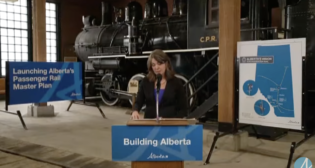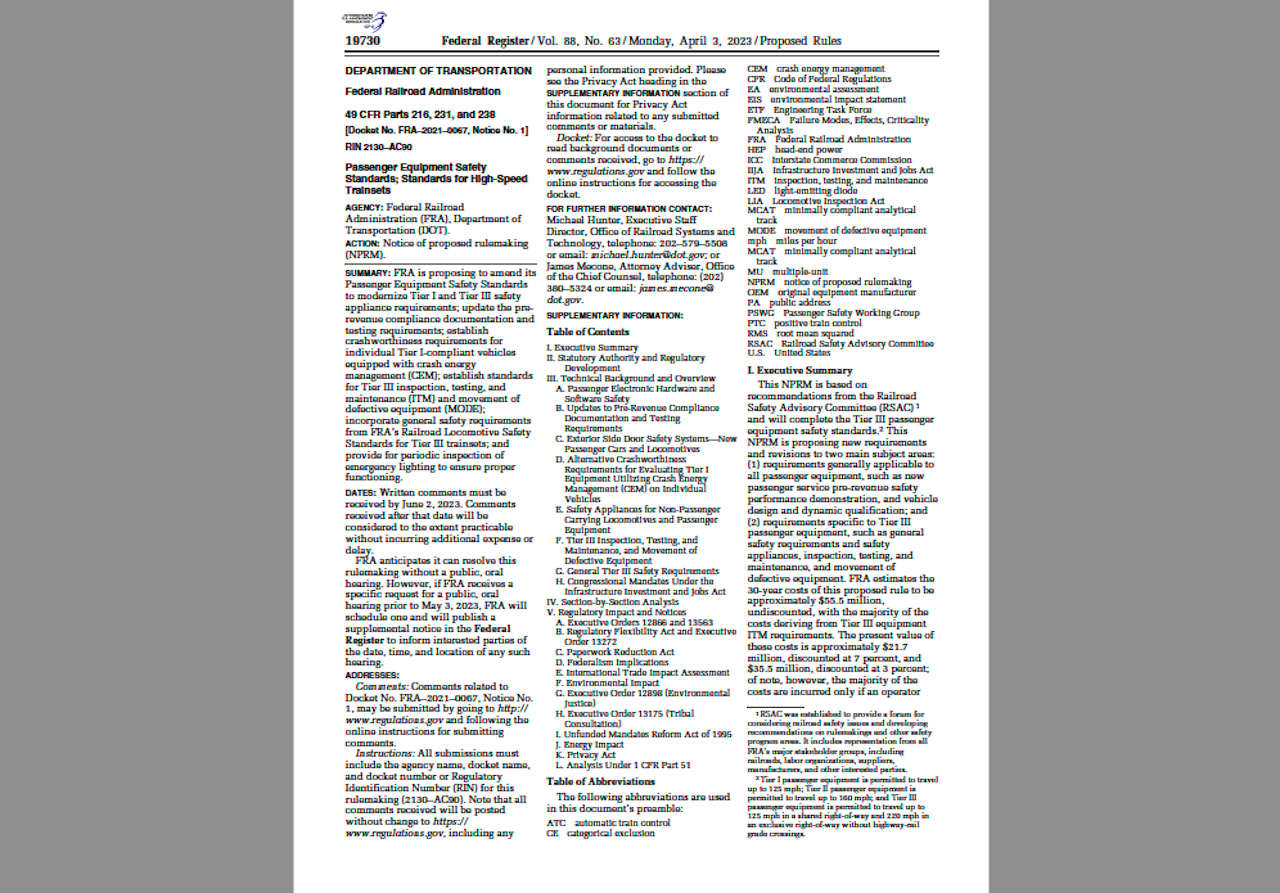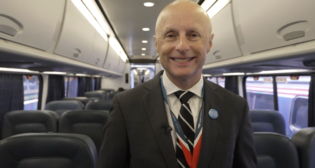
FRA Issues NPRM to Amend Passenger Equipment Safety Standards (UPDATED May 25)
Written by Carolina Worrell, Senior Editor
The Federal Railroad Administration (FRA) has issued a notice of proposed rulemaking (NPRM), proposing to amend its Passenger Equipment Safety Standards as recommended by the Railroad Safety Advisory Committee (RSAC), according to an April 3 Federal Register report.
According to the report, FRA is “proposing to amend its Passenger Equipment Safety Standards to modernize Tier I and Tier III safety appliance requirements; update the pre-revenue compliance documentation and testing requirements; establish crashworthiness requirements for individual Tier I-compliant vehicles equipped with crash energy management (CEM); establish standards for Tier III inspection, testing, and maintenance (ITM) and movement of defective equipment (MODE); incorporate general safety requirements from FRA’s Railroad Locomotive Safety Standards for Tier III trainsets; and provide for periodic inspection of emergency lighting to ensure proper functioning.”
According to FRA, this NPRM (download below), which will complete the Tier III passenger equipment safety standards, proposes new requirements and revisions to two main subject areas: “(1) requirements generally applicable to all passenger equipment, such as new passenger service pre-revenue safety performance demonstration, and vehicle design and dynamic qualification; and (2) requirements specific to Tier III passenger equipment, such as general safety requirements and safety appliances, inspection, testing, and maintenance, and movement of defective equipment.”
FRA says it estimates the 30-year costs of this proposed rule to be approximately $55.5 million, undiscounted, with most of the costs deriving from Tier III equipment ITM requirements. The present value of these costs is approximately $21.7 million, discounted at 7%, and $35.5 million, discounted at 3%. Of note, however, FRA says most of the costs are incurred only if an operator chooses to take advantage of flexibilities in the rule.
The benefits of this proposed rule, FRA says, are estimated to be approximately $0.3 million, undiscounted. Most of the benefits are derived from emergency communication and savings to the Federal Government. The present value is approximately $0.2 million, discounted at 7%, and $0.3 million, discounted at 3%.
According to the agency, FRA, in 2018, issued a final rule adopting new and modified requirements governing the construction of conventional-speed and high-speed passenger rail equipment. FRA notes that “it is important to consider the costs and benefits of this proposed rulemaking in conjunction with the costs and benefits of the 2018 rulemaking, as the current rulemaking is necessary to complete the regulatory framework set out in the 2018 final rule.” Over the 30-year period of analysis for the 2018 final rule, FRA estimated net regulatory cost savings of $284.8 million (low range) to $541.9 million (high range), discounted at 7%. Annualized net regulatory cost savings totaled between $22.9 million and $43.7 million when discounted at a 7% rate.
The net costs of this proposed rule are estimated to be approximately $55.2 million, undiscounted. The annualized net costs are approximately $1.7 million, discounted at 7%.
The comment period for this NPRM is scheduled to close on June 2, 2023. As FRA is granting an extension in response to the American Public Transportation Association’s (APTA) request, the comment period is now extended to August 1, 2023, which is a total of 60 days. Although APTA requested a 120-day extension, FRA says it believes that a 60-day extension will “provide sufficient time for APTA and other interested parties to review the NPRM.”
Comments related to Docket No. FRA–2021–0067, Notice No. 1, may be submitted by going to http://www.regulations.gov and following the online instructions for submitting comments.



